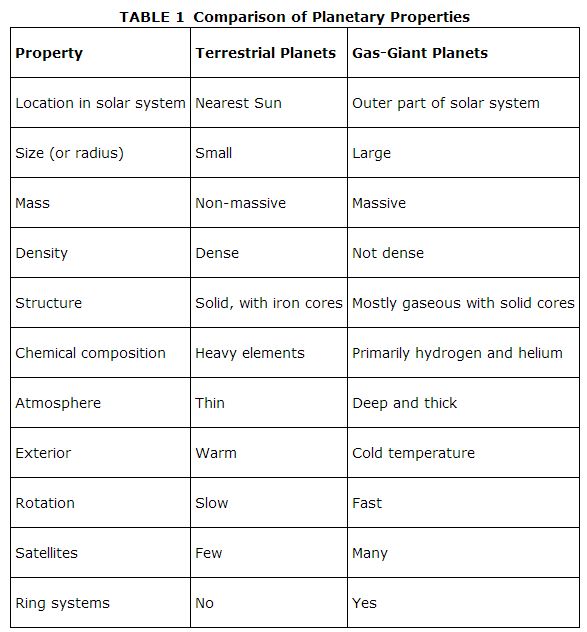Terrestrial Planets, Gas‐Giant Planets
The goal of planetary astronomy is to understand both the differences and the similarities (called comparative planetology) of the major objects in the solar system, including their atmospheres, surfaces, internal structures, and other factors, such as magnetic fields. The study is also aimed at understanding the sequence of events and dates that define the history of the solar system. When studying the planets of the solar system (see Figure 1), the first thing one might notice is that the characteristics of the planets suggest a division into two fundamental types: the terrestrial (Earth‐like) and the gas‐giant (Jupiter‐like) planets. These characteristics are compared in Table 1.

Figure 1
The planets of the solar system, drawn to scale.

The outermost planet, Pluto, however, does not fit into either of these classifications: for example, it is small (really too small to be a terrestrial planet), but in the outer part of the solar system.